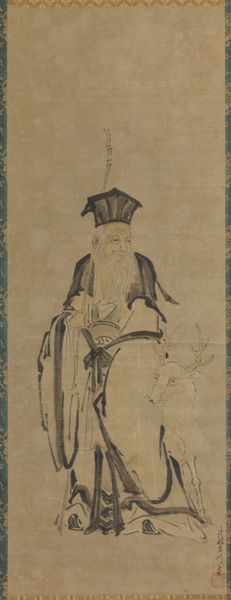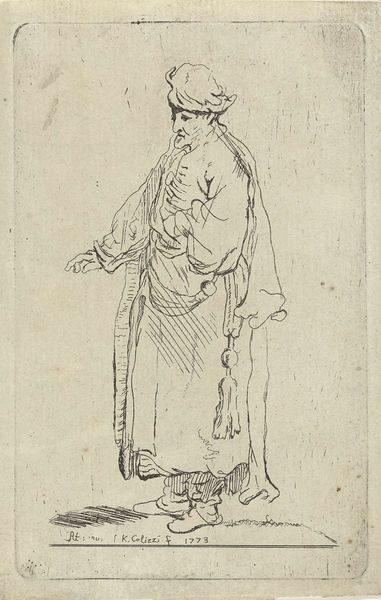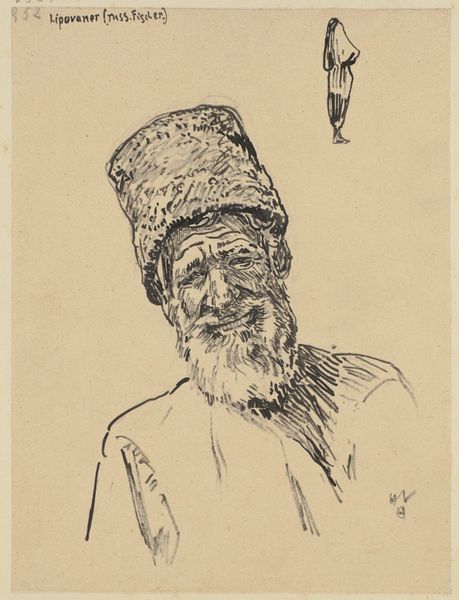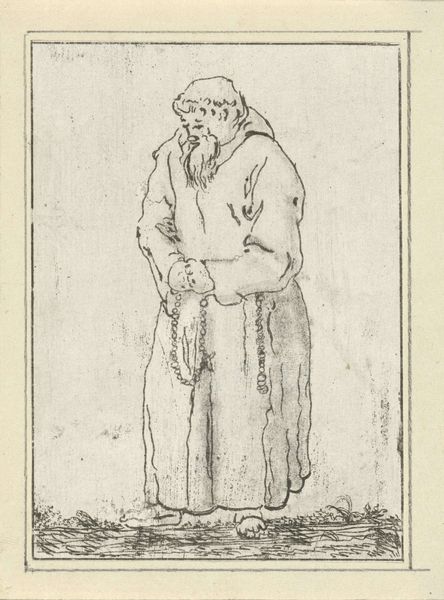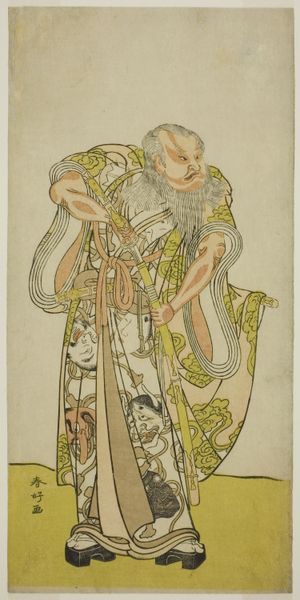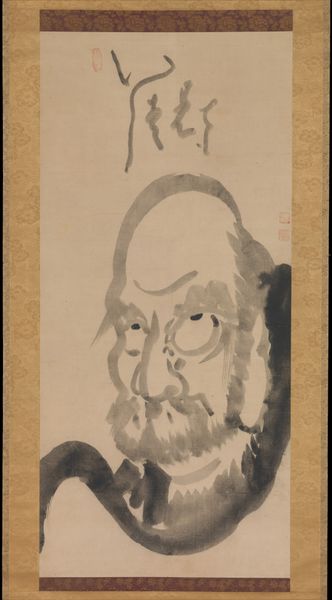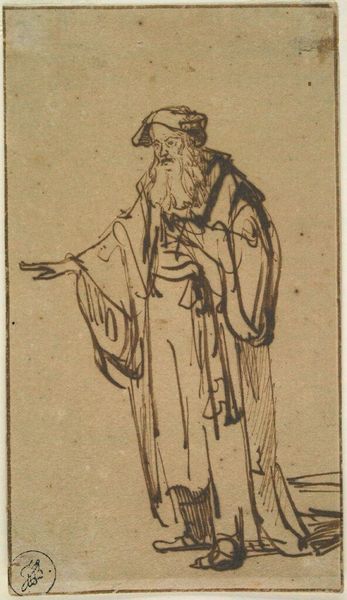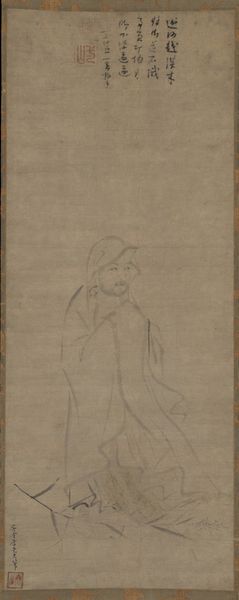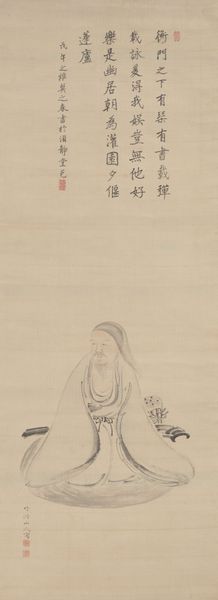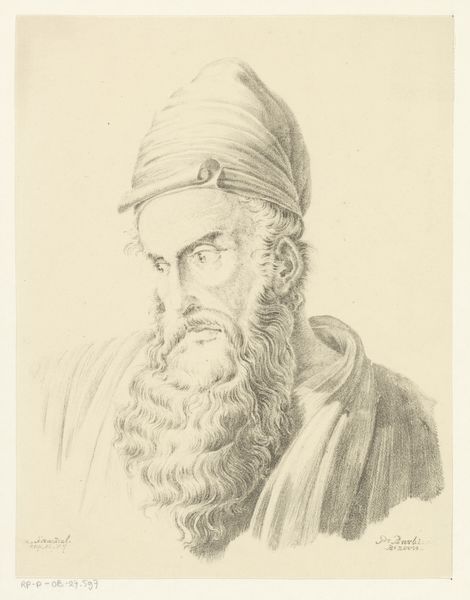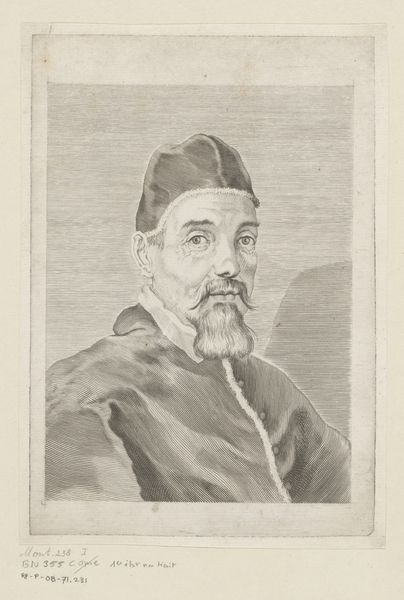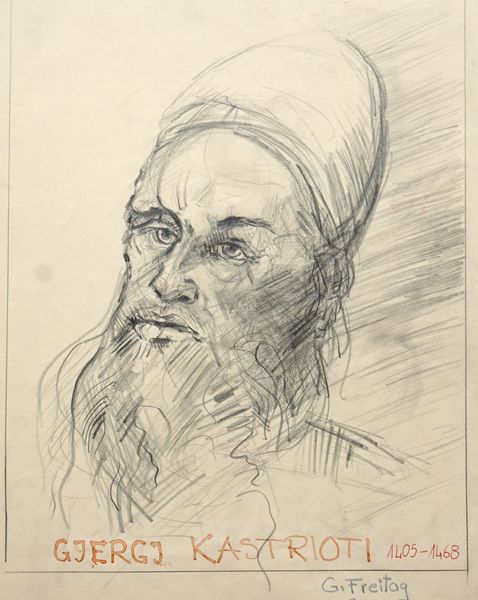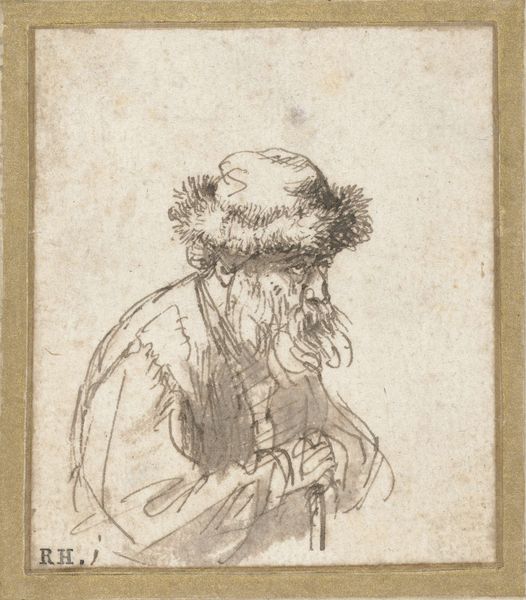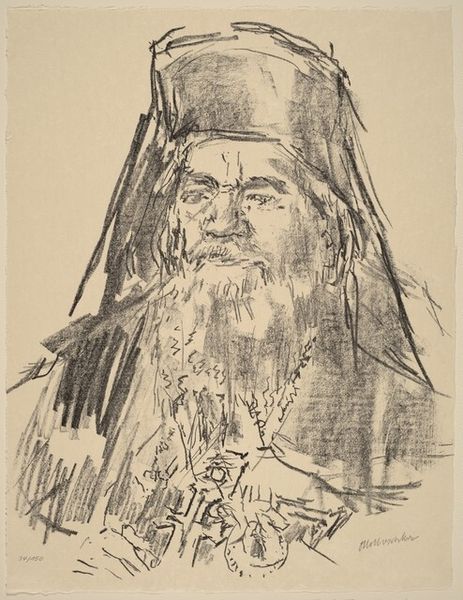
drawing, paper, hanging-scroll, ink
#
portrait
#
drawing
#
ink drawing
#
asian-art
#
paper
#
hanging-scroll
#
ink
#
portrait drawing
#
calligraphy
Dimensions: 50 x 21 3/8 in. (127 x 54.29 cm) (image)87 1/2 x 27 5/16 in. (222.25 x 69.37 cm) (without roller)
Copyright: Public Domain
Editor: Here we have "The Buddhist Layman Vimalakirti," an ink drawing on paper scroll by Hakuin Ekaku, dating back to around the 18th century. The expressive brushstrokes and the figure's intense gaze really strike me. How do you interpret this work, beyond just a portrait? Curator: I see a challenge to traditional notions of religious authority and practice. Hakuin, as a Zen Buddhist priest, frequently depicted Vimalakirti, a layman, precisely because Vimalakirti embodies a radical concept: enlightenment is not confined to monastic life or gender roles. He represents the idea that spiritual understanding can be found in everyday existence. How does the text on the scroll influence your perception? Editor: The calligraphy definitely adds another layer. It feels like a commentary, almost like a… caption. Curator: Exactly. The inscription emphasizes Vimalakirti's unconventional teaching. He’s challenging established dogma. Hakuin used this imagery to critique the formalism he saw creeping into Buddhist practice. What do you make of Vimalakirti’s severe gaze? Editor: It's confrontational, almost challenging the viewer. It’s not serene or passive; there’s definitely a sense of intellectual rigor and perhaps even… defiance. Curator: Precisely. This defiance aligns with the broader socio-political context of the time. Think about how challenging it was for individuals outside the traditional power structures to claim spiritual authority. How does understanding this impact your experience of the piece? Editor: It transforms it! I initially saw it as a historical portrait, but now it feels like a call to question authority and to find spirituality in unexpected places. Curator: And it encourages us to look critically at the established narratives that shape our understanding of art, religion, and society itself. Editor: It makes me want to delve deeper into the historical context. This was a very insightful discussion.
Comments
minneapolisinstituteofart about 2 years ago
⋮
This painting shows an aged man known as Vimalakirti, who is featured in the Vimalakirti Nirdesa Sutra, a Buddhist scripture that explains the key Buddhist concept of sunyata, or emptiness. According to the sutra, Vimalakirti was a wealthy and very wise lay practitioner of Buddhism in India who lived at the same time as the historical Buddha. He had fallen ill, so the Buddha asked numerous followers to visit him, but all declined. Finally, the deity Manjusri agreed to visit Vimalakirti at his home, where the two engaged in an important philosophical debate. The influential Zen priest Hakuin Ekaku is credited with reviving the Rinzai sect of Zen by refocusing the tradition on spiritual exercises such as meditation and koan practice (the use of paradoxical riddles). Painting and calligraphy played an important role in Hakuin’s own Zen practice and in the spread of his teachings.
Join the conversation
Join millions of artists and users on Artera today and experience the ultimate creative platform.
